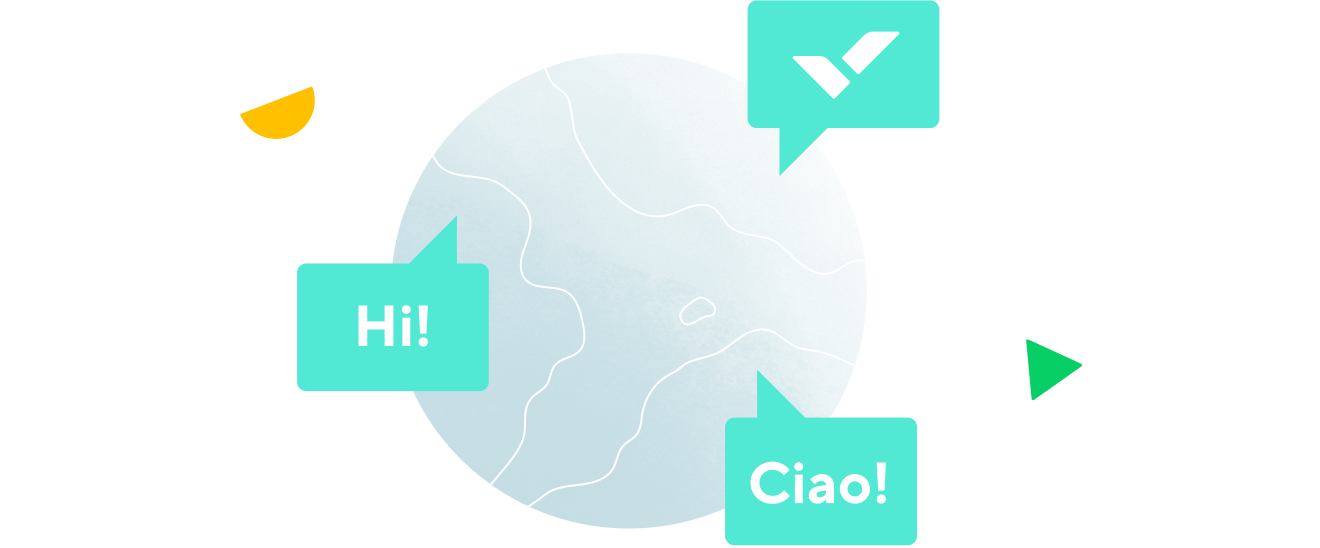Wrike Puts inDrive on the Road to Success

Global Headquarters
Mountain View, California, United States
Industry
Ride-sharing / transportation
# of Users
1500 licensed users; 176 collaborators
Website
Top Challenges
Workflow organization, request form intake, operational visibility
Departments Using Wrike
Marketing, Creative, Operations, Finance, P&C, and more
Why Wrike
They needed a centralized, organized work management solution that could unify teams across 47 countries, helping them streamline a high volume of work requests, create complex campaigns, and scale with the company as it grows.
Feature Highlights
Customizable request forms, Task blueprints, Automation tools, Online proofing, Dashboards and calendars
inDrive is a global mobility and urban services company based in Mountain View, California. With 150 million downloads, it’s the world’s second most downloaded mobility app. As a rapidly scaling organization operating in 47 countries with 2,700 employees, inDrive’s marketing department is tasked with a wide variety of creative projects, design tasks, and localization initiatives to support the company’s global marketing strategy.
Success Story Facts
- Rolled out successful multi-location marketing campaigns
- Cut emails, meetings, and external messaging significantly
- Replaced outdated, disorganized, email-based workflows

Our Wrike workload tool is amazing — it has helped us enormously and I would say that this is the tool that really transformed the way we work.
Lena Ivanova, Creative Lab Coordinator, Marketing Department, inDrive
The Challenge
As a leading ride-sharing company, inDrive has been using Wrike to manage its global operations since 2020. The platform helped to unite project managers, localization managers, copywriters, producers, and designers in one place. However, as the company grew, the amount of requests rose in tandem, eventually doubling in volume. At one point, inDrive was working with more than 6,000 tasks in one folder.
This raised several issues for creative and marketing managers, who were juggling some 150 people using a mix of email, Google Sheets, and Trello. Gauging capacity was a challenge, and often involved reaching out in person or via email. It was also difficult to track projects, find assets, and chase approvals. As a fast-paced business with rapid changes, urgent projects, and tight deadlines, inDrive required significantly better organization and visibility.
“We have a lot of asset and localization requests, and the process for delegation prior to Wrike was too manual to accommodate demand,” says Lena Ivanova, Creative Lab Coordinator for the Marketing Department at inDrive. “There were times when we had to ask each person about their capacity at the moment to determine who could take on a project.”
The Solution
Communication was still mostly taking place by email, Slack, or Telegram, with assets, conversations, and commentary distributed across multiple platforms. Marketing departments were sending ad-hoc requests to creative teams, who weren’t receiving the information they needed to do their work efficiently. The workflow was also ad-hoc, with tight turnaround times and limited advance visibility.
To solve their challenges, the inDrive team overhauled the way they use Wrike, harnessing the platform’s power to transform their work. Key to this was the software’s unrivaled configurability, which allowed the team to adapt it for their needs, create clear processes, and shape a workflow that is unique to their company.
Creating a smooth workflow from request to approval
Through Wrike, inDrive was able to design a custom workflow that organized requests, facilitated creative work, and accelerated project delivery. The first step in that journey was creating a customized request form that included details tailored to the company’s operations such as region, audience, objectives, and more.
By channeling all new projects through this request form, requesters have to be clear about their needs from the get-go, which makes back-and-forth clarification emails or messages a thing of the past.
“It all starts with a request form,” Ivanova points out. “Project managers receive the tasks, go through and add comments or ask for clarity, and may have briefing calls if needed. Then we use blueprints to assign subtasks to the creative team.”
They now have seven different types of blueprints that replicate common project types. This helps teams to hit the ground running with pre-built tasks and subtasks. It also ensures consistency across the organization, facilitating high-quality work and speedy delivery. The time saved by using this new, more efficient process allows teams to take on more valuable tasks.
“Wrike makes our work and day-to-day life much easier,” says Mikhail Naliuhin, Account Director. “Our design team alone have been able to increase their productivity to a level that would have been impossible prior to streamlining our workflow.”
Increasing organizational visibility via custom item types
Operating in 47 countries makes visibility a challenge, but inDrive has used Wrike to gain valuable insights into every part of its business. The marketing team recently started using custom item types to replace the table view they were using in their task description to detail all the elements needed for a project. They have created 25 custom fields and a range of filters, all of which makes the company’s internal search function significantly more powerful.
“By using custom item types to create spaces, we can effectively index key information like a project’s region, channel, usage rights, etc. This makes it easy to find content, which cuts out repeat tasks, reducing our production rate by as much as 20 or 25%,” says Naliuhin.
This exceptional visibility has resulted in greater uptake across Wrike’s other features, such as online proofing. Previously, approvals were funneled through messaging services, but now stakeholders can review assets in-context, adding commentary in real time — from anywhere in the world. Colleagues can log in any time to see these discussions, apply the necessary edits, and compare the old and new versions side by side. All of this is safely recorded on the platform for future reference, or easy duplication for connected tasks.
Maximizing and optimizing internal and external resources
inDrive uses Wrike’s built-in resource management features to measure capacity, balance task loads, and create a calmer, less pressured creative environment. The marketing team uses the workload feature to monitor the entire department’s workload and gauge availability at a glance. They can then drill down into individual schedules using dashboards, dragging and dropping tasks as needed to ensure no team member is overburdened or project at risk of delay.
By applying filters to the interactive calendars, the team can visualize and adjust deadlines in different departments or regions. They also leverage time tracking to create a realistic view of capacity, effort required, and turnaround time, enhancing the accuracy of future planning.
“By centralizing our communication and collaboration in Wrike, our creative teams get more time to work on projects. Now we might have four months’ rather than two weeks’ lead time, so we can produce much bigger, more impressive campaigns,” says Naliuhin. “This is where Gantt charts really help, as we can see projects all the way from start to finish.”

We work with people in many different time zones, but with Wrike we don’t need to wait for a call at night — we can just leave a comment and wait for them to be answered. Wrike really helped us with this, so now we have two to three times less emails and meetings.
Dmitriy Okhlopkov, Head of Operation CIS, inDrive
The next steps
As the inDrive team achieved new levels of efficiency, they began to explore the other ways that Wrike can accelerate their work. This naturally led to Wrike’s automation tools, which have increased the team’s capacity by taking time-consuming tasks off their plate.
They now automate common tasks by creating rules using triggers and actions. These include automatic reminders when progress has slowed or a different department has begun work on a project. This is particularly valuable for big, cross-functional projects. “For example, when we have to fulfill a lot of tasks for different countries and channels, and create assets that draw on a variety of languages and cultural references, the process has to be quick and really effective,” says Naliuhin. “Previously that was a flow that nobody really controlled, but now it feels much more organized as Wrike helped us to automate all the processes.”
Automation is something inDrive is keen to expand, eventually generating multi-step workflows by setting tasks, assigning owners, and commencing projects automatically. It’s another key step in inDrive’s rapid journey from start-up to one of the top five international passenger services in the world. In the last year alone, the team has streamlined their workflow, cut out time-consuming emails, and created their best-ever marketing campaigns. By choosing to partner with Wrike, the most powerful work management solution, inDrive has put its teams on the road to unparalleled productivity — and global success.
Find out how Wrike can help your business
Schedule some time to talk with one of our experts.



